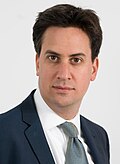| |||||||||||||||||||||||||||||||||||||||||||||||||||||||||||||||||||||||
All 32 London boroughs, all 36 metropolitan boroughs, 19 out of 55 unitary authorities, 74 out of 201 district councils, all 11 Northern Irish councils, and 5 directly elected mayors | |||||||||||||||||||||||||||||||||||||||||||||||||||||||||||||||||||||||
|---|---|---|---|---|---|---|---|---|---|---|---|---|---|---|---|---|---|---|---|---|---|---|---|---|---|---|---|---|---|---|---|---|---|---|---|---|---|---|---|---|---|---|---|---|---|---|---|---|---|---|---|---|---|---|---|---|---|---|---|---|---|---|---|---|---|---|---|---|---|---|---|
| |||||||||||||||||||||||||||||||||||||||||||||||||||||||||||||||||||||||
 Map showing results of English and Northern Irish local elections, 2014. Council control in England and in Northern Ireland the largest parties are shown (where all councils had no overall control). Black represents No Overall Control, white represents areas that did not hold an election, blue represents the Conservative Party, red represents the Labour Party and gold represents the Liberal Democrats. Areas in light red represent the Democratic Unionist Party. Dark green represents Sinn Féin and light green represents the SDLP. Areas shown in grey are outside England and Northern Ireland | |||||||||||||||||||||||||||||||||||||||||||||||||||||||||||||||||||||||
The 2014 United Kingdom local elections were held on 22 May 2014. Usually these elections are held on the first Thursday in May but were postponed to coincide with the 2014 European Parliament Elections. Direct elections were held for all 32 London boroughs, all 36 metropolitan boroughs, 74 district/borough councils, 19 unitary authorities and various mayoral posts in England and elections to the new councils in Northern Ireland.
Contents
- Overview of results
- UK-wide results
- England results
- Northern Ireland results
- London boroughs
- Results
- Individual council results
- Metropolitan boroughs
- Unitary authorities
- Non-metropolitan districts
- Whole council
- Half of council
- Third of council
- Mayoral elections
- Northern Ireland
- Party composition of new councils
- Votes cast
- Electoral administration
- Eligibility to vote
- Enacting legislation
- See also
- Notes
- References
All registered electors (British, Irish, Commonwealth and European Union citizens) who were aged 18 or over on the day of the election were entitled to vote in the local elections.
The BBC's projected national vote share (PNV) put Labour on 31%, the Conservatives on 29%, UKIP on 17%, and the Liberal Democrats on 13%. [1] Rallings and Thrasher of Plymouth University's national equivalent vote share (NEV) estimated 31% for Labour, 30% for the Conservatives, 18% for UKIP, and 11% for the Liberal Democrats. [2]
For the fourth year running, the Labour Party enjoyed the largest share of the vote in local elections, but its share of the vote was its smallest since 2010. UKIP, which topped the same day's European Parliament elections, finished third in vote share, claiming council seats from Labour, the Conservatives and Liberal Democrats.





